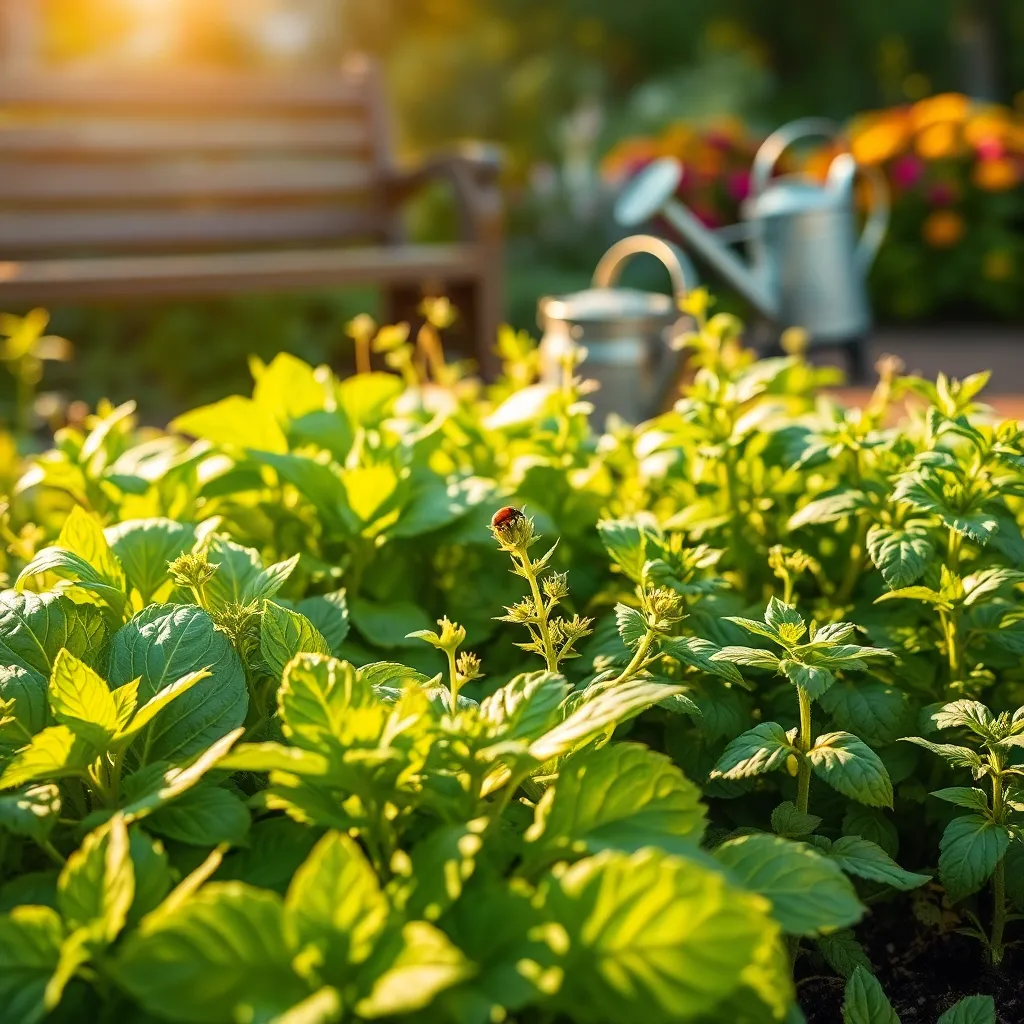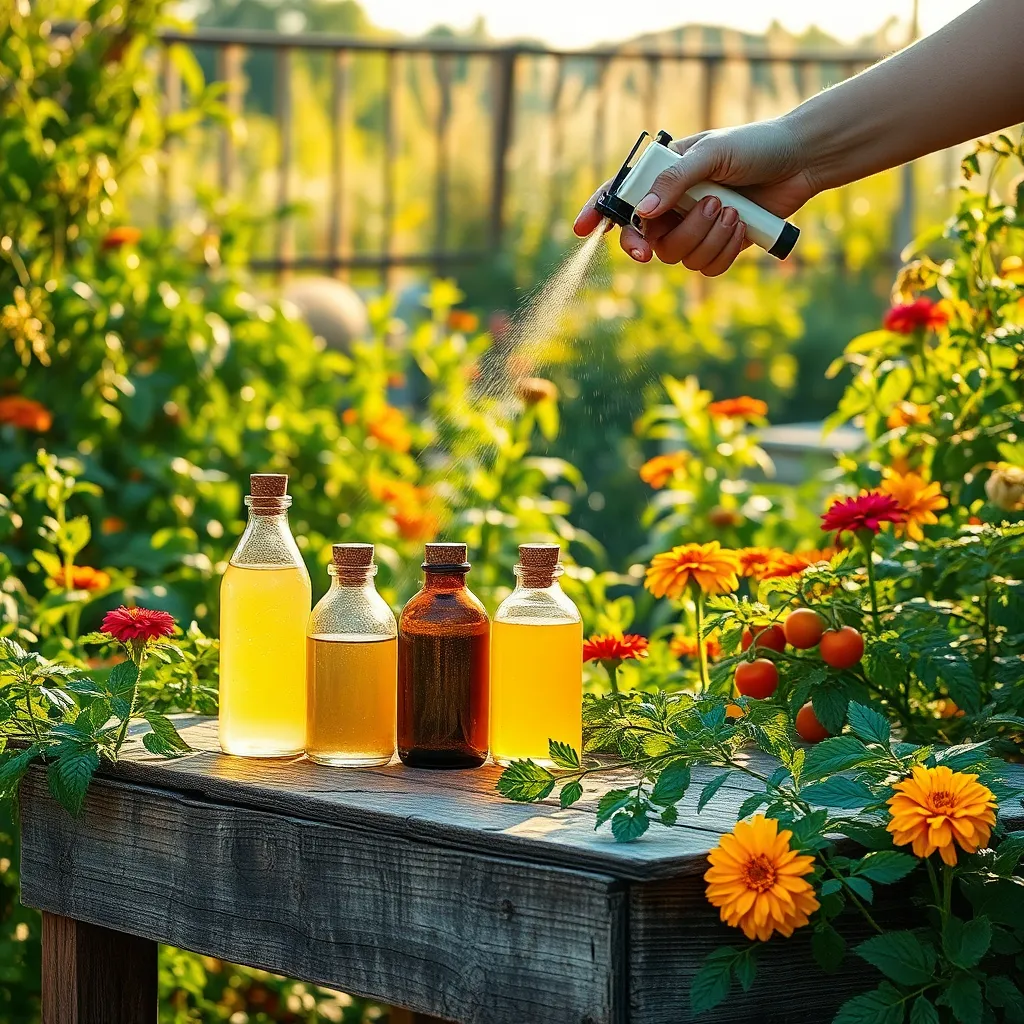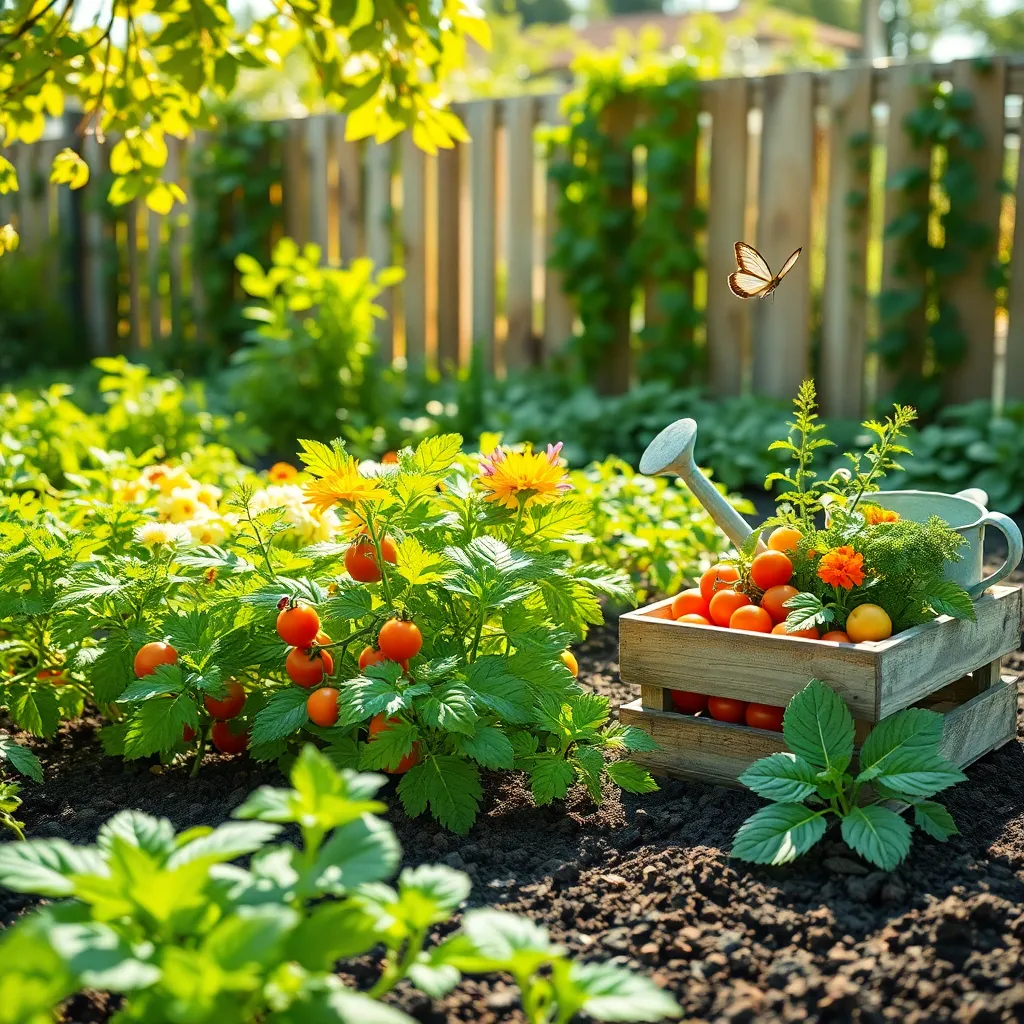In the sanctuary of your garden, where you nurture vibrant blooms and lush greenery, the last thing you want is an uninvited pest party. Whether you’re a green-thumbed veteran or just beginning your gardening journey, finding ways to protect your botanical haven without harming the environment is both crucial and rewarding. Eco-friendly pest control methods not only safeguard your precious plants but also ensure that you’re contributing positively to the ecosystem surrounding them.
Today, more gardeners are turning to sustainable practices, eager to maintain harmony between their plants and the earth. In this article, we’ll explore six common eco-friendly pest control techniques that are both effective and simple to implement. From natural repellents to beneficial insects, you’ll discover practical tools that empower you to manage pests responsibly and effortlessly.
As we delve into these methods, you’ll gain insights into creating a thriving garden that flourishes without the need for harsh chemicals. Each approach is designed to be accessible, ensuring that both novice gardeners and seasoned experts can apply these tips with confidence. So, let’s embark on this green journey together, embracing the art of pest control that respects nature’s balance and enhances the beauty of your garden sanctuary.
Understanding Eco-Friendly Pest Control

Eco-friendly pest control is a sustainable approach that minimizes harm to the environment while effectively managing garden pests. Whether you’re a beginner or an experienced gardener, understanding the principles of eco-friendly pest control can significantly improve the health of your plants.
To start, focus on creating a balanced ecosystem where beneficial insects thrive. Encourage the presence of natural predators like ladybugs and lacewings by planting a variety of flowering plants such as dill, fennel, and cosmos, which attract these helpful allies.
Another effective method is to use physical barriers to protect your plants from pests. For instance, using floating row covers can shield crops from insects while still allowing sunlight and rain to nourish your plants.
For those seeking advanced techniques, consider implementing companion planting to naturally deter pests. Pairing plants such as tomatoes with basil can help repel insects like aphids and tomato hornworms, enhancing your garden’s resilience naturally.
Natural Predators: Your Garden Allies

Embracing natural predators in your garden is an excellent eco-friendly pest control method. These beneficial creatures can significantly reduce the need for chemical pesticides, ensuring a healthier and more sustainable garden environment.
Ladybugs are among the most effective natural predators, known for their voracious appetite for aphids. To attract ladybugs, plant dill, fennel, or yarrow, as these plants provide the nectar and pollen essential for ladybug sustenance.
Another beneficial ally is the lacewing, which preys on a wide range of pests including caterpillars and scale insects. Consider planting composite flowers like daisies or sunflowers to invite lacewings into your garden, as these blooms offer ideal landing spots and nectar sources.
For more advanced gardeners, introducing parasitic wasps can help control caterpillar and beetle populations. Ensure you have a variety of flowering plants with tiny blooms, such as sweet alyssum or coriander, to support these wasps throughout their lifecycle.
Companion Planting for Pest Reduction

Companion planting is a time-honored technique that involves growing certain plants together to naturally deter pests. By strategically pairing plants, you can create a more resilient garden ecosystem that reduces the need for chemical interventions.
For example, marigolds are excellent companions for tomatoes as they repel nematodes and other harmful insects. Plant marigolds around the base of your tomato plants, ensuring they receive full sun and well-draining soil to thrive alongside their companions.
Basil is another great ally in the garden, particularly when grown near peppers and tomatoes. It not only enhances the flavor of these vegetables but also acts as a natural insect repellent, keeping away flies and mosquitoes.
To maximize the benefits of companion planting, consider the specific needs of each plant. Ensure that paired plants have compatible water and sunlight requirements, such as radishes and carrots, which both thrive in cool-season conditions with consistent moisture.
DIY Organic Pest Sprays Explained

Creating your own organic pest sprays is an eco-friendly way to protect your plants from unwanted insects. These sprays can be made using common household items, making them both cost-effective and safe for the environment.
One popular DIY spray is a mixture of water and dish soap, which can effectively control soft-bodied insects like aphids. To make it, combine one tablespoon of dish soap with one quart of water in a spray bottle, then apply directly to the affected areas of the plant.
For a more potent solution, you can add garlic and hot pepper to your soap spray. Crush several garlic cloves and a teaspoon of cayenne pepper, steep them in hot water for an hour, strain, and mix the liquid with your soap solution for enhanced effectiveness.
When using these sprays, always test on a small area of the plant first to ensure there’s no adverse reaction. It’s best to apply the sprays early in the morning or late in the afternoon to avoid plant burns caused by the sun.
Advanced gardeners can try neem oil, a natural pesticide that works against a wide range of pests. Mix one teaspoon of neem oil and a few drops of dish soap into a quart of water, then spray onto plants every week for maximum protection.
Neem Oil: A Natural Solution

Neem oil is a powerful ally for gardeners seeking a natural pest control method. Extracted from the seeds of the neem tree, its active compound, azadirachtin, disrupts the life cycle of insects, making it an effective deterrent against common garden pests.
To apply neem oil, mix it with water and a few drops of mild soap to help it adhere to plant surfaces. Spray this mixture evenly over affected plants, ensuring thorough coverage on both the top and underside of leaves for maximum effectiveness.
Neem oil is gentle enough for use on almost all plants, including vegetables, herbs, and ornamentals. However, it’s best to apply it in the early morning or late afternoon to prevent leaf burn, as direct sunlight can intensify its effects.
For beginners, start with a test spray on a small section of the plant to ensure no adverse reactions occur. More experienced gardeners might consider using neem oil as part of an integrated pest management system, alternating it with other eco-friendly solutions to reduce the likelihood of pest resistance.
When using neem oil, consistency is key; reapply every 7 to 14 days during pest outbreaks or as a preventive measure. This regular application can help break the breeding cycle of pests, ensuring long-term protection for your garden.
Implementing Integrated Pest Management

Integrated Pest Management (IPM) is a holistic approach that combines multiple strategies to manage pests sustainably. It’s about understanding your garden’s ecosystem and using a variety of methods to keep pests under control without relying heavily on chemicals.
To start, regularly inspect your plants for signs of pest activity such as holes in leaves or sticky residue. This proactive monitoring allows you to identify problems early and choose the most appropriate control methods.
Encouraging beneficial insects like ladybugs and lacewings can naturally reduce pest populations. These predators feed on common garden pests such as aphids, thus maintaining a healthy balance in your garden.
Another key strategy in IPM is to use companion planting to deter pests. For instance, planting marigolds near tomatoes can help repel nematodes and other unwanted insects.
Finally, when intervention is necessary, consider using targeted treatments like insecticidal soap or neem oil. These options are less harmful to beneficial insects and the environment compared to broad-spectrum pesticides.
Conclusion: Growing Success with These Plants
In navigating the intricate dance of relationships, adopting eco-friendly pest control methods can serve as a metaphor for addressing and nurturing the dynamics between partners. The six key concepts we explored — effective communication, mutual respect, emotional support, setting boundaries, shared goals, and adaptability — are akin to the sustainable practices of deterring pests naturally. These principles foster a harmonious environment where relationships can thrive without the toxicity that comes from neglect or misunderstanding.
As a next step, take a moment to assess your current relationship landscape. Identify one area where you can implement a new strategy, whether it’s initiating an open dialogue or setting clear boundaries. This small, intentional shift can pave the way for greater understanding and connection.
Remember, building a strong, enduring relationship is an ongoing journey. Save or bookmark this article as your go-to resource for nurturing your relationship sustainably. As you continue to cultivate these eco-friendly habits, you pave the path for a flourishing partnership, rich in love and understanding. Let this be your guide to lasting relationship success, where mutual growth and joy are always within reach.







